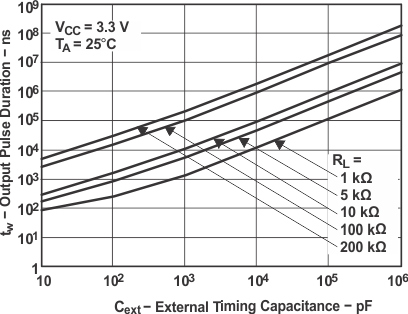Hi, what controls the length of the pulse delay for the 74VLC1g123? And how large is the jitter in the pulse delay?
Thank you
This thread has been locked.
If you have a related question, please click the "Ask a related question" button in the top right corner. The newly created question will be automatically linked to this question.
Hi, what controls the length of the pulse delay for the 74VLC1g123? And how large is the jitter in the pulse delay?
Thank you
The '123 charges the capacitor through the resistor, and ends the pulse when a certain voltage is reached.
The accuracy depends on the tolerances of these external components.
And for 10 ns, you would need a total capacitance that is smaller than the parasitic capacitances of the components and the traces.

10 ns ± 100 ps is not achievable with logic devices.
Note this answer by Ladish, DID NOT resolve my issue. He misread the question, and answer something other than what I asked.
I clicked it by error, unfortunately there is no way to unclick it. I would appreciate it if he would delete the answer.
The delay from the trigger input to the beginning of the output pulse is specified as tpd in sections 5.7…5.9. It is influenced by supply voltage, temperature, load capacitance, and manufacturing variations. If you keep the first three constant, the jitter might be small enough, but the datasheet does not guarantee it.
[I am not allowed to delete an accepted answer.]
I read the datasheet before I asked the question.
1) There are no graphs in 5.7-5.9 or anywhere else that show tpd vs anything, not Vs, T, or CL
Therefore, "keeping those three constant", is not helpful. It means nothing unless you quantify it. How constant does it need to be?
If the information were present in the datasheet, I would not be asking this question.
2) then, keeping these constant brings us to "jitter might be small enough".
a) you imply there is not a source of jitter other than those three parameters. Is that so?
b) "small enough" is not a number.
How constant does one need to keep those things, or what the jitter will be given that they are "held constant", remains unanswered.
3) How much variation is there due to manufacturing variations?
4) I deleted this question because I could not change the "resolved" label, and your first answer is misleading, it is not an answer to the question being asked. Also I find it insulting for the reason given above.
Please delete it, and remove the resolved label if you are able.
I'm going to close this thread since I answered this question in another thread. Please continue any discussion there.